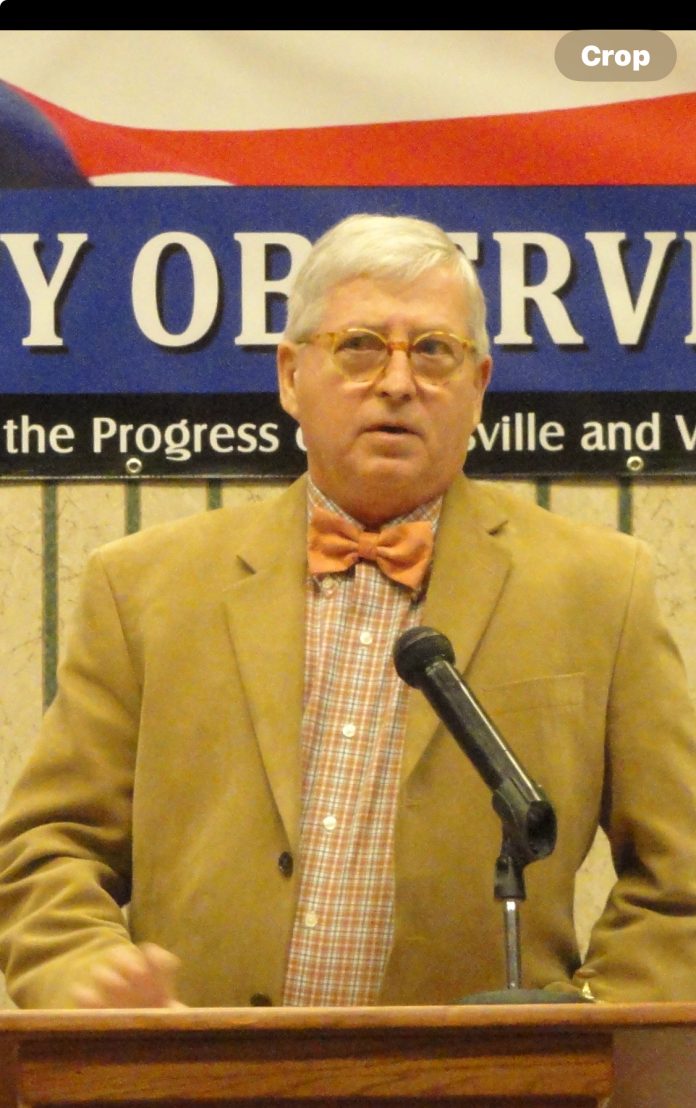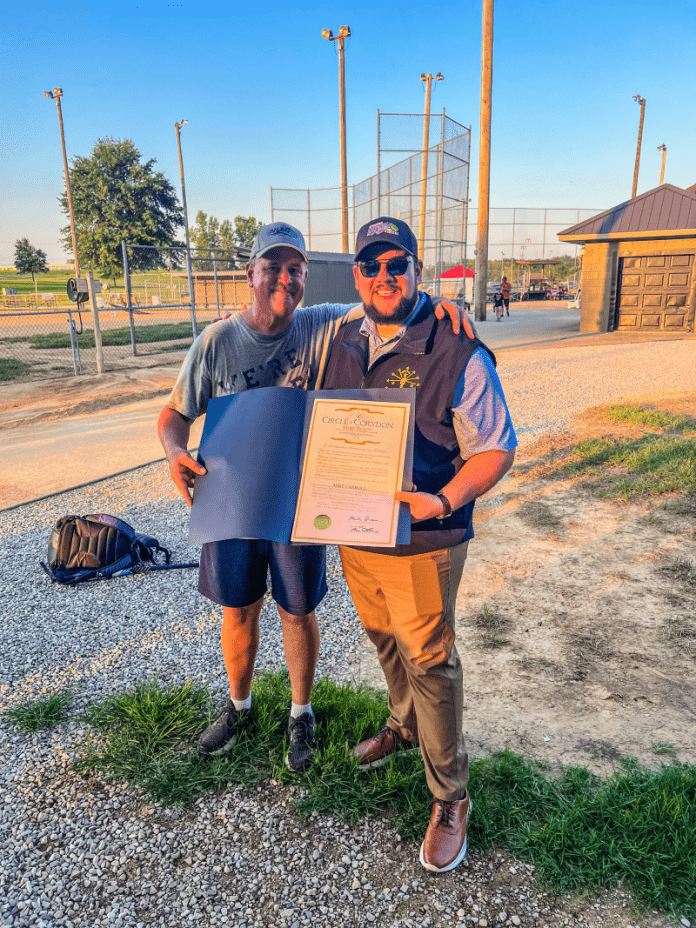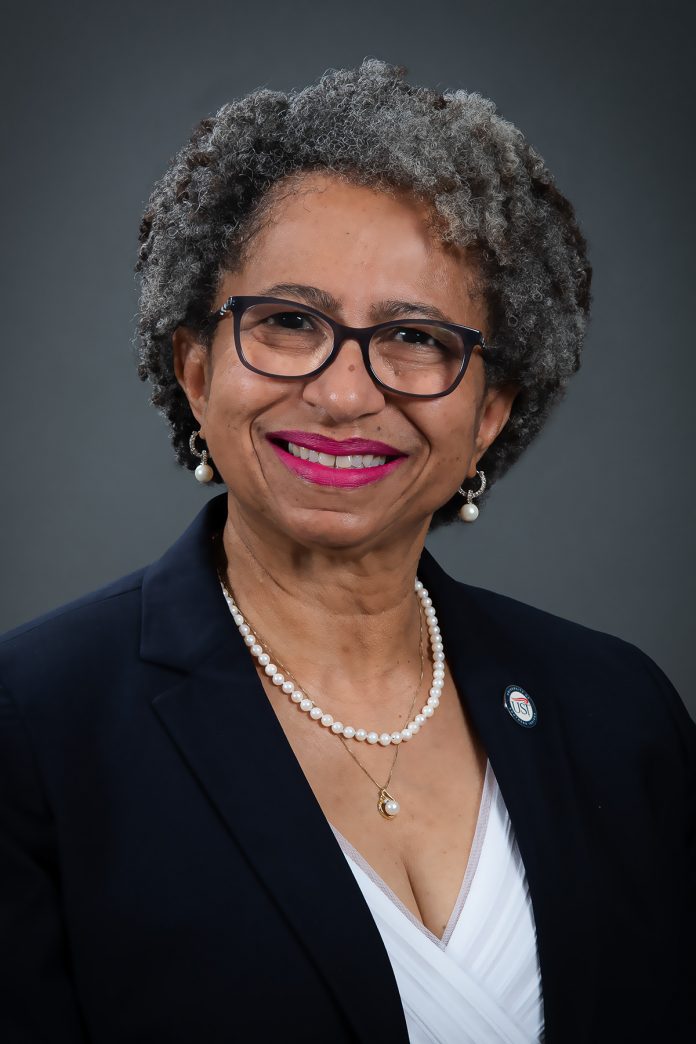Taylor homers twice as Otters fall in rubber match
CRESTWOOD, Ill. – The Evansville Otters (27-51) dropped the series finale in a high scoring affair against the Windy City ThunderBolts (31-47) Sunday afternoon, 15-11.
Graham and Logan Brown struck early as G. Brown singled followed by a L. Brown double to put Evansville on top 1-0.
Braden Scott made his 17th start of the season, allowing a run and striking out two in the first.
Keenan Taylor led off the second with his second solo home run in as many days to jump Evansville back to the lead. J.T. Benson followed that with a double and scored on a G. Brown single. Taylor wasn’t done mashing, as he hit another home run to give Evansville a 5-1 lead in the third.
J.J. Cruz hit a sacrifice fly to add another run in the fourth, and after newly signed Darryl Jackson singled to start the fifth, he would eventually be brought in on G. Brown’s fourth hit of the day to give the Otters a 7-1 lead.
Scott worked scoreless frames in the second, third and fourth, but Windy City would find four runs off of him in the fifth. After L. Brown’s opposite field home run pushed Evansville’s lead to 8-5, Scott went out for the sixth. He got one out, but allowed three runners to reach.
Nick McAuliffe was called on to finish the sixth, but allowed the three batters he faced to reach. Garret Crowley entered to finish the inning, but a defensive mistake and a double allowed four more runs to come across, putting Evansville behind 12-8.
After seven runs in the sixth, Crowley just needed nine pitches to get through the seventh as he pitched Evansville’s first immaculate inning of the season. Crowley went back out for the eighth, but gave up back-to-back hits and was replaced by Alex Valdez. He finished the eighth, allowing two more runs to score after another defensive mishap, making it 15-8.
The Otters didn’t go down without a fight, as they led off the ninth with back-to-back doubles. After two quick outs, Jackson got his second hit of the night. Dennis Pierce, Ellis Schwartz and G. Brown all were down to their final strike, but each reached base to keep the game alive. L. Brown came up to the plate as the tying run and hit a fly ball 15 feet shy of tying the game, as Evansville came up just short, 15-11.
The offense had 16 hits and G. Brown’s four hit game was the first for the Otters since July 9. All but one Otter recorded a hit and every starter reached base at least twice.
Our Beloved founderer,husband, father , grandfather and friend will be greatly missed
Ronald Cosby, 82, of Madison, Alabama, passed away on August 6, 2025, in Madison. Born on July 28, 1943, in Evansville, IN., Ron lived a life rooted in hard work, family devotion, and a deep connection to public policy.
From an early age, Ron embraced the values of council and perseverance of good public policy. He began student council in college, developing a strong work ethic that would shape his future endeavors. In 2002, he channeled that passion into founding City-County Observer, a business he built from the ground up. Over the course of more than twenty four years, Ronald’s dedication transformed his company into a respected name throughout Evansville, Indiana. His craftsmanship and commitment to excellence are evident in countless new policies that make him a living legacy that will continue to flourish long after he is gone.
Ronald’s greatest pride was his family. He enjoyed baseball games and watching the grandkids play any sport he could. He is survived by his beloved wife Marilyn Cosby; three children: Melanie Solmos (Joe), Mollie Darke-Schreiber (Jill), Bart Darke (Kacy), Jason Cosby; grandchildren: Romon Solmos, Ralph Hadlie and Henslie Darke-Schreiber, Sam and Grace Darke, He also leaves behind his sister Anita Cosby, and brother Sammie Cosby and a host of loving family members and friends who will miss him dearly.
He was preceded in death by his parents Sam Cosby and Daisy Cosby. Grandaughter Sophia Solmos, and brothers Donald, Gary and David Cosby.
Ronald’s memory lives on through good public policy in politics. May his legacy continue to inspire those who knew him.
Visitation will be held in Evansville, IN with details to follow.
The Celebration of Ronald H. Cosby will be on August 16, 2025. We invite all who wish to honor Ron.
Services will be at Alexander Funeral Home- East Chapel
2115 Lincoln Ave.
Evansville, IN 47714
Time: 11:00-1:00 with services at 1:00
HONOR FLIGHT SOUTHERN IN
MISSION: Honor Flight of Southern Indiana is the 133rd Honor Flight National Network hub and serves the Indiana counties of Crawford,Daviess, Dubois, Gibson, Knox, Lawrence, Martin, Orange, Perry, Pike, Posey, Spencer, Vanderburgh and Warrick. We provide a day of honor and celebration in Washington DC to America’s Veterans by visiting memorials dedicated to their service and sacrifices, without any cost to the Veterans. This is made possible with the help of generous donors and volunteers. We are a 501c3 corporation. We select our oldest Veterans first , along with those Veterans who may be medical necessity. Any Veteran who has served this great country is eligible for their Honor Flight. A Veteran DOES NOT have to serve during conflict or overseas to qualify for his or her FREE Honor Flight.
Wheels UP for EVV19 on OCT. 25, 2025
EVV19 is 77 days from being DC bound with (86) very deserving Veterans and their Guardians. The first event for EVV19 kicks off August 16 with the EVV19 Phone Blitz. This is when volunteers will call those Veterans who are next eligible from our database! If you know a Veteran 78 years or older, who has not taken his or her Honor Flight, and is currently not in our database PLEASE get them signed up before the eligibility deadline date of AUGUST 10, 2025. Each flight has (86) veterans, (86) guardians, and (16) key HFSI team members on the flight; medical team, bus captains, photographers, wheelchair team rep., logistics, flight director, HFSI president, Facebook live and a TV media reporter. There are ways that you can support the EVV19 mission, the HFSI organization and these local Veterans. Sign up to be a Volunteer, participate in Operation Mail Call, purchase an item from our Amazon Wish List, save the date of 10-25-25 to plan on attending the Heroes Welcome Home Parade, and/or be a $200 Food/Drink Sponsor. Follow us on Facebook for details, go to our website for applications (www.honorflightsi.org), call our phone answering line to leave a message at 812-297-4136, or email us at vicepresident@honorflightsi.org
Local coach receives Circle of Corydon Award
| by Tim O’Brien | |||||
|
Anyone involved with youth athletics, past or present, knows the importance of a good coach. Some coaches go above and beyond to make a lasting, positive impact on the lives of those they mentor.
With that in mind, I recently honored Newburgh resident and youth athletics coach Mike Carroll with the Circle of Corydon Award. Mike, who serves as the chief financial officer for Heritage Federal Credit Union, spends most of his free time mentoring youth athletes in girls’ basketball and softball. |
|||||
|
Mike exemplifies the spirit of the Circle of Corydon Award, not only teaching athletes the fundamentals of sports, but also instilling values of teamwork, discipline and perseverance.
The Circle of Corydon Award was established by the governor in 2017 to recognize Hoosiers who have made remarkable contributions to the betterment of Indiana and its people, demonstrating through life and service qualities exemplified by the state’s greatest citizens. This is the only award issued and signed jointly by members of both the executive and legislative branches. This award is an extension of my thanks to Mike for being a role model, leader and outstanding member of this community. Through his efforts on and off the field, he has helped shape the future of many young athletes. |
|||||
Vanderburgh County Board of Commissioners
DRAFT AGENDA
Vanderburgh County Board of Commissioners
August 12, 2025 – 9:30 a.m.
Room 301, Civic Center Complex
1. Call to Order
2. Attendance
3. Pledge of Allegiance
4. Action Items
A. Engineer
1. 2. Change Order #1: VC25-01-01 “Kleitz Road Bridge #1131 Rehabilitation”
Oak Hill Road Project: CenterPoint Energy Grant of Easement for Public Right of
Way
B. Health Department
1. Indiana Department of Health (IDOH) Grant Agreement Contract #94423
C. Superintendent of County Buildings
1. Special Purchase Request: Johnson Controls Quote for Old Courthouse Fire
Panel Replacement
D. E. Contract for Residential Demolition and Site Cleanup of 5504 Big Cynthiana Road
Final Reading of Resolution No. CO.R-07-25-007: A Resolution Adopting a Flood Hazard
Protection Ordinance as Chapter 18.04
5. Department Head Reports
6. New Business
A. Announcement of Highway Garage Superintendent
7. Old Business
8. Consent Items
A. Approval of July 29, 2025, Board of Commissioners Meeting Minutes
B. Approval of July 31, 2025, Executive Session Summary Minutes
C. Employment Changes
D. Auditor
1. Claims Voucher Reports
i. ii. July 28, 2025 – August 1, 2025
August 4, 2025 – August 8, 2025
E. Engineer
1. Report and Claims
F. Highway
1. Surplus Request
G. H. County-Owned Property Sold at 2025 Abutting Property Sale
Quit Claim Deed to Combine Two Tax Parcels Into One Single Tax Parcel:
82-05-35-018-042.008-025 – South of 1423 S Barker Avenue
82-05-35-018-042.009-025 – 1423 S Barker Avenue
I. Quit Claim Deed to Combine Two Tax Parcels Into One Single Tax Parcel:
82-06-20-025-106.011-029 – 656 E Michigan Street
82-06-20-025-106.010-029 – 658 E Michigan Street
9. Public Comment
10. Adjournment
Drainage Board Immediately Following
Hopson to serve as Executive Director of Campus and Community Strategy
Dr. Pamela Hopson has been appointed Executive Director of Campus and Community Strategy at the University of Southern Indiana. She most recently served as Interim Vice President for Student Affairs since July 10, 2024. Hopson reports to the President and will serve in this capacity until her retirement July 1, 2026.
In her new role, she is responsible for assessing key areas and initiatives across campus to ensure continued success based on relevant data and projections. Her duties will include reviewing, analyzing and recommending best practices on how the University can strengthen and sustain engagement with the external community. Recommendations aligned with USI’s mission and vision will be presented to the President and his Cabinet for consideration.
Hopson first joined the University in 1979, working in the Office of Student Financial Assistance. In 1994, when the Multicultural Center (MCC) was established, she was selected to serve as director. In 2018, she was promoted to Executive Director of the MCC, where she served until her appointment as Interim Vice President for Student Affairs. Under her leadership, the MCC continuously enhanced the personal and academic success of USI students for more than 30 years.
VP Vance meets with Indiana GOP leadership on redistricting; Democrats denounce effort
Vice President JD Vance spent several hours in the Hoosier State Thursday trying to build support for a new redistricting, but Gov. Mike Braun and legislative leaders haven’t jumped on board yet.
The visit came amid a tussle in Republican-held Texas over new maps — and threats from Democrat-run states to retaliate.
Braun told reporters the Statehouse meeting went “pretty good” and that “we covered a wide array of topics.” He confirmed that at least part of the discussion was about redistricting, specifically.
When asked if state and federal officials came to any agreement, the governor said only that “we listened.”
I appreciated the opportunity to hear from the Vice President on a variety of issues, which we will continue to talk through in the days ahead.
– Senate Pro Tem Rodric Bray, R-Martinsville
House Speaker Todd Huston and Senate Pro Tem Rodric Bray, both Republicans, were also present, but neither answered questions after the meeting.
Instead, each released a brief written statement.
Huston said he appreciated the chance to meet with Vance and “share many of the successes we’re experiencing in Indiana.” He added that the group “had a meaningful discussion” and would continue conversations with the Trump administration.
On X, Lt. Gov. Micah Beckwith praised the visiting politician and said he “fully support(ed)” the effort to redistrict.
“Your bold leadership and unwavering support for President Trump’s mission to expand the conservative majority in Congress is exactly what America needs right now,” Beckwith wrote. “Redistricting isn’t just politics — it’s about ensuring the voice of We the People is heard loud and clear. Indiana is proud to play a key role in reshaping a stronger, freer future for our nation…”
State lawmakers redraw districts after each decennial census, as per the Indiana Constitution. They last did so in 2021. Congressional Republicans have a 7-2 advantage.
Bray called the visit “an honor” and described the meeting as “productive,” noting that several topics important to Indiana were discussed.
“I appreciated the opportunity to hear from the Vice President on a variety of issues, which we will continue to talk through in the days ahead,” Bray said.
A move in Indiana would likely focus on the First District in northwest Indiana, which is held by U.S. Rep. Frank Mrvan, a Democrat.
Mrvan, in a separate afternoon press conference, accused the Trump administration of not meeting the needs of his district, specifically in the sale of U.S. Steel to Japanese-based Nippon Steel.

“They are afraid of checks and balances, and they are afraid that they know that their policies have hurt individuals,” said Mrvan, describing the recent budget law as one that gave tax breaks to the wealthy and cut Medicaid.
“We wouldn’t be in this position if they weren’t afraid that they cut health care access to millions of Hoosiers. We wouldn’t be in this position if tariffs didn’t cause a lag in manufacturing, and we wouldn’t be in this position if energy costs weren’t rising 20%,” he continued.
He also said he believed “that this is a done deal,” but that bending to Trump “isn’t going to increase (Braun’s) prospect of being president of the United States.”
During the Vance visit, several hundred Hoosiers, many of them angry and cursing, rallied at the Indiana Statehouse to protest against the proposal.
Julia Vaughn, the executive director of Common Cause Indiana, vowed to challenge any maps that came from a special session.
“We will see you in court, Gov. Braun,” said Vaughn, whose organization was heavily involved in the last redistricting session in 2021. She called on the crowd to return to the statehouse tenfold if a special session was called, noting that her organization gave Indiana’s maps a ‘D’ grade.
“… Leave our congressional maps alone!”
Pushback at the statehouse
Vance arrived at the Indiana Statehouse shortly before 10:30 a.m. and spent just shy of an hour in Braun’s office.
After the meeting — and before heading back to the nation’s capital — the vice president headlined a national Republican fundraising event held just blocks away in downtown Indianapolis.
All the while, those opposed to redistricting staged an hours-long sit-in at the statehouse.
“This is clearly a power grab,” said Rep. Cherrish Pryor, D-Indianapolis. “This is simply an attempt by the President to stay in power forever.”
Redistricting efforts in Texas, where President Donald Trump said Republicans were “entitled” to more seats, have stalled after Democrats fled the state.










With razor-thin margins in the U.S. House of Representatives, netting more GOP-controlled seats in the 2026 midterm would protect Trump’s priorities in the second half of his term.
The two seats held by Democrats are in Indianapolis and in the northwestern part of the state.
In order to redistrict, Braun would have to call a special session – which comes at a cost. A two-week special session in 2022 cost $240,000.
“At a time where there’s been unprecedented squeeze on Hoosiers pocketbooks, it is unconscionable to think that we’re going to add to some people’s pocketbooks by calling a special session,” said Sen. Shelli Yoder, D-Bloomington.
Yoder is the state Senate minority leader.
U.S. Rep. André Carson, of the 7th Congressional District, similarly panned any redistricting effort, saying it would disenfranchise Hoosiers. He noted that this proposal came the same week that the monumental Voting Rights Act became law 60 years ago.
“This is a civil rights issue; this is about our right to free speech; this is about our right to vote,” said Carson. “Our fighting for voting rights is not the past. It isn’t in the future. It’s right now.”

One of Mrvan’s constituents, Jillian Schranz, came from northwestern Indiana Thursday to protest against the proposed redistricting.
“I think gerrymandering is not new. Democrats do it; Republicans do it,” Schranz said. “But the fact that we’re talking about a special session and not waiting for census data is really alarming.”
She said she’d heard about ongoing budget concerns directly from her General Assembly lawmakers, Sen. Dan Dernulc and Rep. Hal Slager. She emailed both Republican men to ask for their perspective on redistricting.
“It would be hypocritical for Indiana Republicans to call the special session,” Schranz concluded.
Beth McClellan, from the north side of Indianapolis, arrived at the state capitol building shortly before 9 a.m. and said she’s also concerned about a possible re-draw of Indiana’s 5th District, which has become increasingly competitive after years of Republican dominance.
“The idea of redrawing our districts … it’s ludicrous, it’s bad optics and it’s a bad idea,” she said. “We’re a red state — already with Republican-dominated seats here and in Washington. … Our elected officials should be focused on issues, not playing around with maps.”
Will redistricting happen?
Pete Seat, a longtime Indiana Republican strategist and national political commentator, said he senses a lot of hesitancy among GOP leaders in Indiana.
He noted there is an “element of Hoosier hospitality involved and an open ear, but maybe not an open mind.”

Seat said with Republican supermajorities controlling both the House and Senate it would not be a heavy lift. But it would go against two decades of messaging that Indiana handles its map-drawing process the right way.
“We take a lot of pride in our map and how we draw our districts and the thought put behind it and maintaining communities of interest and respecting existing boundaries,” he told the Indiana Capital Chronicle. “Do you really want to go back on that?”
The former White House spokesman said he doesn’t know if there is compelling data pointing to the need for a mid-decade redistricting.
“But I mean, look, we live in a transparent political environment with Donald Trump at the helm, and I think the rationale would be naked politics,” he said. “Not a lot of people hide from that these days, ‘yeah we want more seats to be in the U.S. House of Representatives.’ So what?”
Seat doesn’t think there would be a political cost to Indiana Republicans related to backlash against them for drawing maps early. But he noted there could be a cost based on how the new boundaries line up.
“There’s going to be some lines that shift. How does that impact the incumbents or future candidates in those newly drawn districts? There’s a ripple effect,” he said.
Seat discounted the cost of a special session as being a factor in any decision.
“If this is something you feel needs to be done, the cost of it is relative peanuts to other other issues,” he said. “I don’t think that’s the straw that breaks the camel’s back.”
Back to School on the Runway: Event on August 9 Raises Funds for Kids
Fashion for a Purpose takes place at Eastland Mall with proceeds benefiting Youth First
EVANSVILLE, IN – The community and media are invited on Saturday, August 9, at 1 pm CT to Fashion for a Purpose at Eastland Mall. This fashion show, featuring Hot 96’s Sarah Pepper as Master of Ceremonies, is a fun back-to-school event that blends fashion and community, with proceeds benefiting Youth First.
Volunteer models will walk the runway and feature styles from numerous Eastland Mall stores, including Aeropostale, American Eagle Outfitters, Buckle, Hollister Co., JCPenney, Lane Bryant, and Maurices.
The event runs from 1:00-2:00 pm CT and takes place in the Dillard’s wing of Eastland Mall. Donations are being accepted for Youth First, a local nonprofit dedicated to strengthening youth and families by embedding licensed mental health professionals in 130 K-12 partner schools across 14 Indiana counties. Youth First also provides prevention programs, community engagement, and parent resources that empower youth and families and promote healthy behaviors, correct misperceptions, and foster positive development in young people.
“Fashion for a Purpose is another example of Eastland Mall’s commitment to the community,“ says Eastland Mall marketing manager Sean Ferguson. “Working alongside Youth First for our first ever event has been a privilege and an honor. When we can advertise our stores and highlight the great work of Youth First in our community, it’s a win-win.”
Vanderburgh County Board of Commissioners
DRAFT AGENDA
Vanderburgh County Board of Commissioners
August 12, 2025 – 9:30 a.m.
Room 301, Civic Center Complex
1. Call to Order
2. Attendance
3. Pledge of Allegiance
4. Action Items
A. Engineer
1. 2. Change Order #1: VC25-01-01 “Kleitz Road Bridge #1131 Rehabilitation”
Oak Hill Road Project: CenterPoint Energy Grant of Easement for Public Right of
Way
B. Health Department
1. Indiana Department of Health (IDOH) Grant Agreement Contract #94423
C. Superintendent of County Buildings
1. Special Purchase Request: Johnson Controls Quote for Old Courthouse Fire
Panel Replacement
D. E. Contract for Residential Demolition and Site Cleanup of 5504 Big Cynthiana Road
Final Reading of Resolution No. CO.R-07-25-007: A Resolution Adopting a Flood Hazard
Protection Ordinance as Chapter 18.04
5. Department Head Reports
6. New Business
A. Announcement of Highway Garage Superintendent
7. Old Business
8. Consent Items
A. Approval of July 29, 2025, Board of Commissioners Meeting Minutes
B. Approval of July 31, 2025, Executive Session Summary Minutes
C. Employment Changes
D. Auditor
1. Claims Voucher Reports
i. ii. July 28, 2025 – August 1, 2025
August 4, 2025 – August 8, 2025
E. Engineer
1. Report and Claims
F. Highway
1. Surplus Request
G. H. County-Owned Property Sold at 2025 Abutting Property Sale
Quit Claim Deed to Combine Two Tax Parcels Into One Single Tax Parcel:
82-05-35-018-042.008-025 – South of 1423 S Barker Avenue
82-05-35-018-042.009-025 – 1423 S Barker Avenue
I. Quit Claim Deed to Combine Two Tax Parcels Into One Single Tax Parcel:
82-06-20-025-106.011-029 – 656 E Michigan Street
82-06-20-025-106.010-029 – 658 E Michigan Street
9. Public Comment
10. Adjournment
Drainage Board Immediately Following











